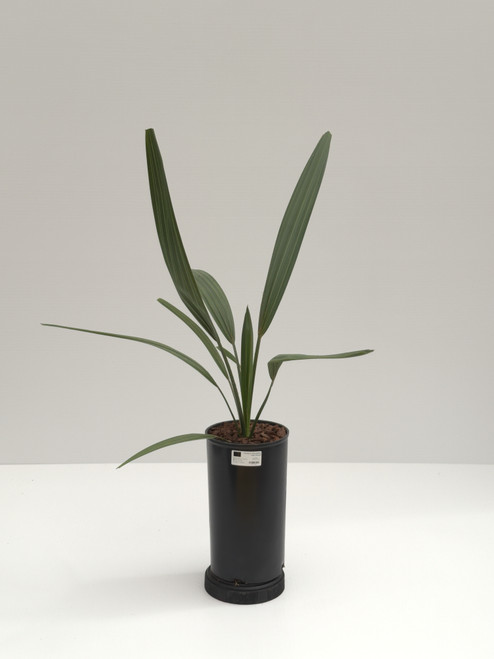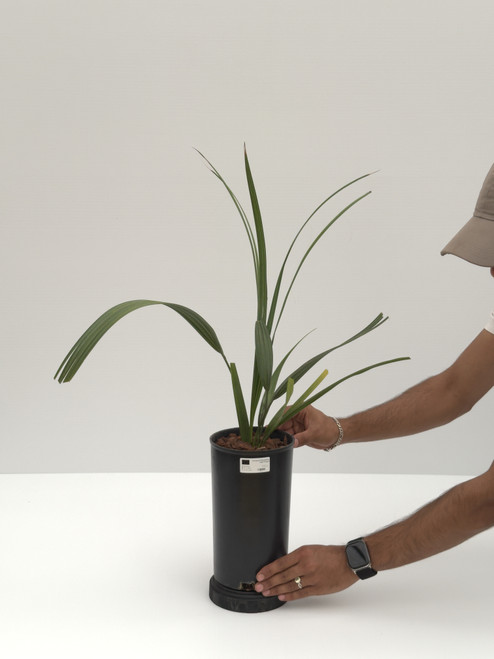Product Description
Habitat and Distribution
Sabal minor is found in Alabama, Arkansas, Georgia, Florida, Louisiana, Mississippi, North Carolina, Oklahoma, South Carolina, and Texas.
Description
This is a small palm that ranges across the Coastal Southeast. In the shade of swamps, it has a subterranean trunk and leaves that grow to about two or three feet tall. When grown in a sunny garden, the leaves can grow several feet wide and the plant can develop a short trunk. It is identified by a very small, round fruit, a very short extension of the stalk (the costa) into the leaf blade, and a flower stalk that branches twice, less than those of any other Sabal species. It grows in sunny or shady, moist to fairly dry sites. It is reported to be salt tolerant. Most references recommend this palm for zone 7 and south. (southeastgarden.com) Editing by edric.
Culture
Sabal minor is likely the second hardiest known palm in the world after Rhapidophyllum hystrix. The Sabal minor 'Louisiana' variety is known for its short, fat trunk that can develop after 20 years of growth. The Sabal minor 'McCurtain' variety, native to McCurtain County in southeastern Oklahoma (Zone 7), is the hardiest ecotype of the species and established specimens can survive -20 degrees Celsius, albeit with major damage or complete defoliation.
Comments and Curiosities
This is a tillering palm, it exhibits saxophone style root growth (it has a heel), keep top third of heel above soil elevation!
Sabal minor (Jacq.) Pers. dwarf palmetto or swamp palmetto has a solitary subterranean stem (rarely aboveground to 2 m) and 4–10 dark green leaves with a weak costa (Figure 4). Leaf segments are only joined a short distance near the base and have no filamentous fibers. Inflorescences are branched twice and extend beyond the leaves. S. minor is found on moist to wet alluvial soils from north central Florida to the Carolinas and west to Texas, typically as an understory species in temperate deciduous hardwood forests. The needle palm (Rhapidophyllum hystrix) grows in similar habitat but is distinguished by the long needles emanating from the leaf sheaths near the bud. (edis.ifas.ufl.edu)





















